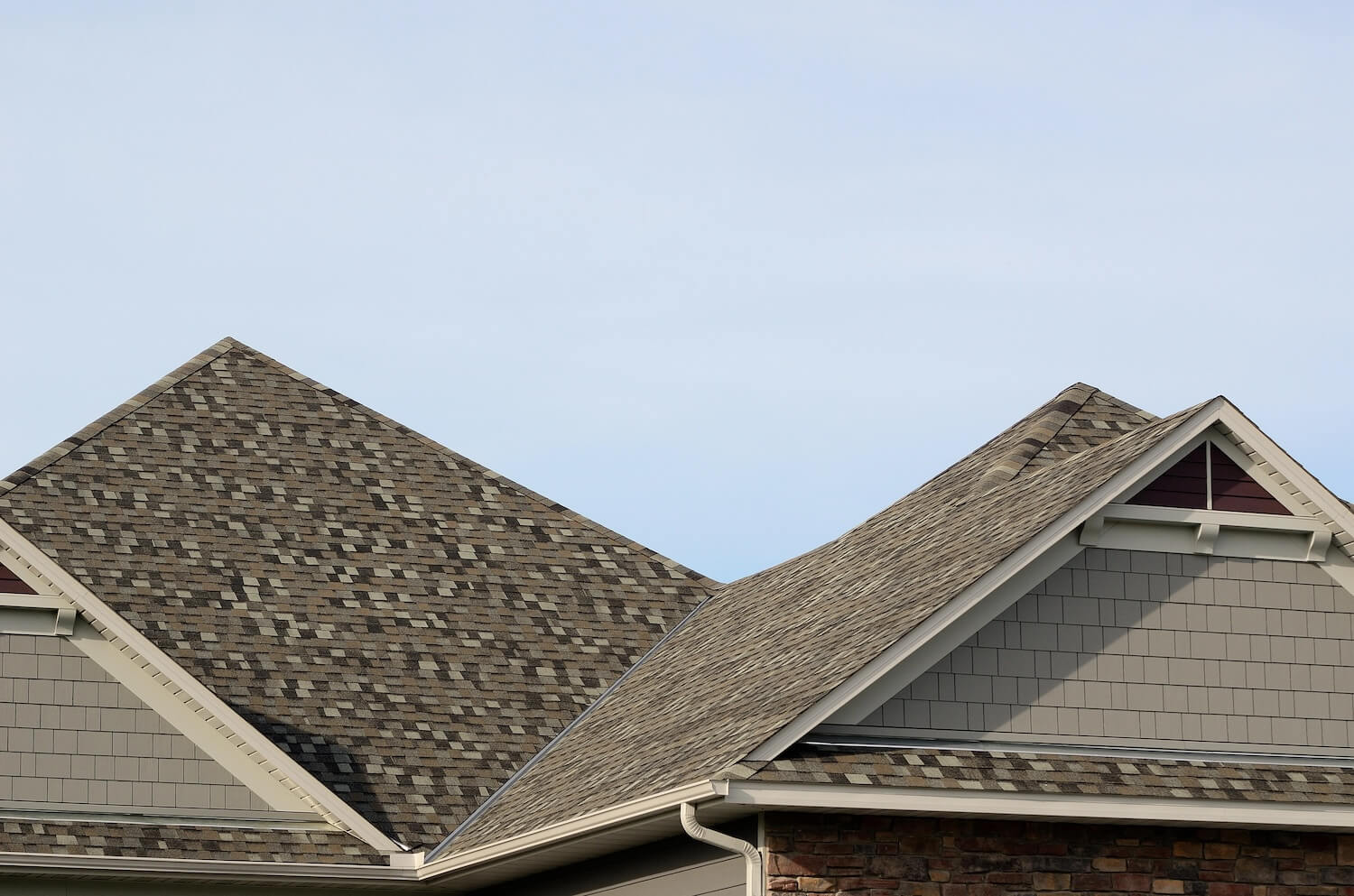A roof is more than just a covering for your home; it’s a vital component that protects your property and loved ones from the elements. However, to ensure its longevity and effectiveness, regular maintenance is crucial. Neglecting roof maintenance can lead to costly repairs or even premature replacement.
In this article, we’ll delve into essential roof maintenance tips that will help prolong its lifespan and keep your home safe and secure.

Understanding Your Roof’s Anatomy
Before delving into maintenance tips, let’s familiarize ourselves with the fundamental anatomy of a roof. A typical roof comprises several layers, each playing a crucial role in protecting your home:
- Roof Deck: The base layer of the roof, usually made of plywood or oriented strand board (OSB), provides structural support.
- Underlayment: Installed directly on top of the roof deck, the underlayment acts as a secondary barrier against moisture.
- Roofing Material: This can vary from asphalt shingles to metal panels, tiles, or slate, serving as the primary weatherproofing layer.
- Flashing: Metal strips or sheets installed around roof penetrations such as chimneys, vents, and skylights to prevent water infiltration.
- Ventilation System: Intake and exhaust vents ensure proper airflow in the attic, preventing moisture buildup and heat retention.
Inspecting Your Roof Regularly for Essential Care
Regular inspections are the cornerstone of effective roof maintenance. Ideally, you should inspect your roof at least twice a year, preferably in the spring and fall. Additionally, it’s wise to inspect your roof after severe weather events such as storms or heavy snowfall. During these inspections, look for signs of damage or wear and tear, including:
- Shingles: Look for missing, cracked, curled, or blistered shingles. Damaged shingles compromise your roof’s ability to shed water effectively.
- Flashing: Check for signs of damage or deterioration in the flashing around chimneys, vents, and other roof penetrations. Damaged flashing can lead to water leaks.
- Gutters and Downspouts: Inspect gutters and downspouts for clogs, debris buildup, or damage. Clogged gutters can cause water to overflow and damage the roof and siding.
- Attic: If accessible, inspect the attic for signs of water stains, mold, or mildew. These indicate potential roof leaks or ventilation issues.
- Structural Integrity: Look for sagging or uneven areas on the roof, which could indicate underlying structural issues that need addressing.
Addressing Minor Repairs Promptly
If you notice any signs of damage during your roof inspection, it’s crucial to address them promptly. Minor issues, if left unattended, can escalate into more significant problems over time. Here are some common repairs that may be necessary:
Replace Missing or Damaged Shingles
Replace any missing, cracked, or damaged shingles to maintain your roof’s integrity and weatherproofing.
Repair Flashing
If the flashing is damaged or loose, reseal or replace it to prevent water infiltration around roof penetrations.
Fix Leaks
Locate and repair any roof leaks promptly to prevent water damage to your home’s interior and structural components.
Seal Cracks and Gaps
Inspect caulking and sealant around roof vents, chimneys, and other penetrations. Reapply sealant as needed to prevent water intrusion.
Cleaning Gutters and Downspouts
Clogged gutters and downspouts can impede proper water drainage, leading to water backup and potential roof damage. Make it a habit to clean your gutters at least twice a year, preferably in the spring and fall. Here’s how to clean your gutters effectively:
- Remove Debris: Use a ladder and gloves to manually remove leaves, twigs, and other debris from the gutters.
- Flush Gutters: After removing debris, flush the gutters and downspouts with a garden hose to clear any remaining dirt or small particles.
- Check for Damage: Inspect gutters and downspouts for signs of damage or corrosion. Replace damaged sections as needed to ensure proper function.
- Install Gutter Guards: Consider installing gutter guards to prevent debris buildup and minimize the need for frequent cleaning.
Trimming Overhanging Branches
Overhanging branches can pose a threat to your roof, especially during storms or high winds. Trim any branches that hang over your roof to prevent them from scraping or falling onto the shingles. Additionally, keep trees near your home well-maintained to minimize the risk of branches breaking and causing damage to your roof or other structures.
Ensuring Proper Ventilation
Proper ventilation is essential for maintaining a healthy roof and prolonging its lifespan. Without adequate ventilation, heat and moisture can build up in the attic, leading to problems such as mold growth, wood rot, and shingle damage. Here’s how to ensure proper ventilation:
- Check Ventilation Systems: Inspect intake and exhaust vents to ensure they are free of debris and functioning correctly.
- Install Attic Fans: Consider installing attic fans to improve airflow and reduce heat buildup in the attic during the summer months.
- Seal Air Leaks: Seal any gaps or cracks in the attic insulation or around penetrations to prevent warm, moist air from entering the attic space.
Inspecting and Maintaining Skylights and Ventilation Systems
Skylights and ventilation systems are essential components of your roof that require regular inspection and maintenance to ensure optimal performance. Here’s how to care for these elements:
Skylights
Inspect skylights for signs of damage, such as cracks or leaks. Clean skylight surfaces to remove dirt and debris that can obstruct natural light. Check seals and flashing around skylights for signs of wear and deterioration, and repair or replace as needed.
Ventilation Systems
Proper attic ventilation is crucial for regulating temperature and humidity levels, preventing moisture buildup, and prolonging the lifespan of your roof. Ensure that intake and exhaust vents are clear of obstructions and functioning correctly. Consider installing additional vents if necessary to improve airflow and reduce the risk of moisture-related issues.
Applying Protective Coatings and Sealants
Applying protective coatings and sealants can help extend the lifespan of your roof and enhance its resistance to the elements. Consider the following coatings and sealants for roof maintenance:
Waterproofing Sealants
Apply waterproofing sealants to vulnerable areas such as flashing, seams, and roof penetrations to prevent water infiltration and leaks. Choose a high-quality sealant compatible with your roofing material and climate conditions.
Reflective Coatings
Reflective coatings can help reduce heat absorption and energy costs by reflecting sunlight away from the roof surface. These coatings are particularly beneficial in hot climates and can also prolong the life of your roof by reducing thermal stress.
Anti-Algae Treatments
Algae growth on your roof not only affects its aesthetic appearance but can also lead to moisture retention and premature deterioration of roofing materials. Apply anti-algae treatments to inhibit algae growth and preserve the integrity of your roof.
Professional Inspections and Maintenance
While DIY maintenance is essential, some tasks are best left to professionals. Consider hiring a qualified roofing contractor to conduct a comprehensive inspection and maintenance service at least once every few years. A professional roofer has the expertise and equipment to identify potential issues and perform repairs or replacements as needed. Additionally, professional maintenance can help extend your roof’s lifespan and save you money on costly repairs down the line.
Investing in Quality Materials and Installation
When it comes to roof maintenance, prevention is key. Investing in high-quality roofing materials and professional installation can help minimize the need for repairs and prolong your roof’s lifespan. Choose durable materials that are suited to your climate and architectural style, and hire experienced contractors who follow best practices for installation. While quality materials and installation may come with a higher upfront cost, they can save you money in the long run by reducing the need for frequent repairs and replacements.
Regular Maintenance Schedule
To streamline your home roof maintenance efforts, consider implementing a regular home maintenance schedule:
- Spring: Inspect your roof for winter damage, clean gutters, and trim overhanging branches.
- Summer: Check for algae or moss growth, inspect flashing and seals, and ensure proper ventilation.
- Fall: Clear gutters and downspouts of fallen leaves and debris, inspect the roof for damage, and prepare for winter weather.
- Winter: Monitor roof for ice dams and snow buildup, clear snow as needed, and address any leaks promptly.
Conclusion
A well-maintained roof is essential for protecting your home and ensuring its longevity. By following these essential roof maintenance tips, you can prolong your roof’s lifespan, minimize the risk of damage, and save money on costly repairs. Remember to inspect your roof regularly, address minor repairs promptly, clean gutters and downspouts, trim overhanging branches, ensure proper ventilation, and invest in quality materials and installation. By taking proactive measures to care for your roof, you can enjoy peace of mind knowing that your home is safe, secure, and built to last.










